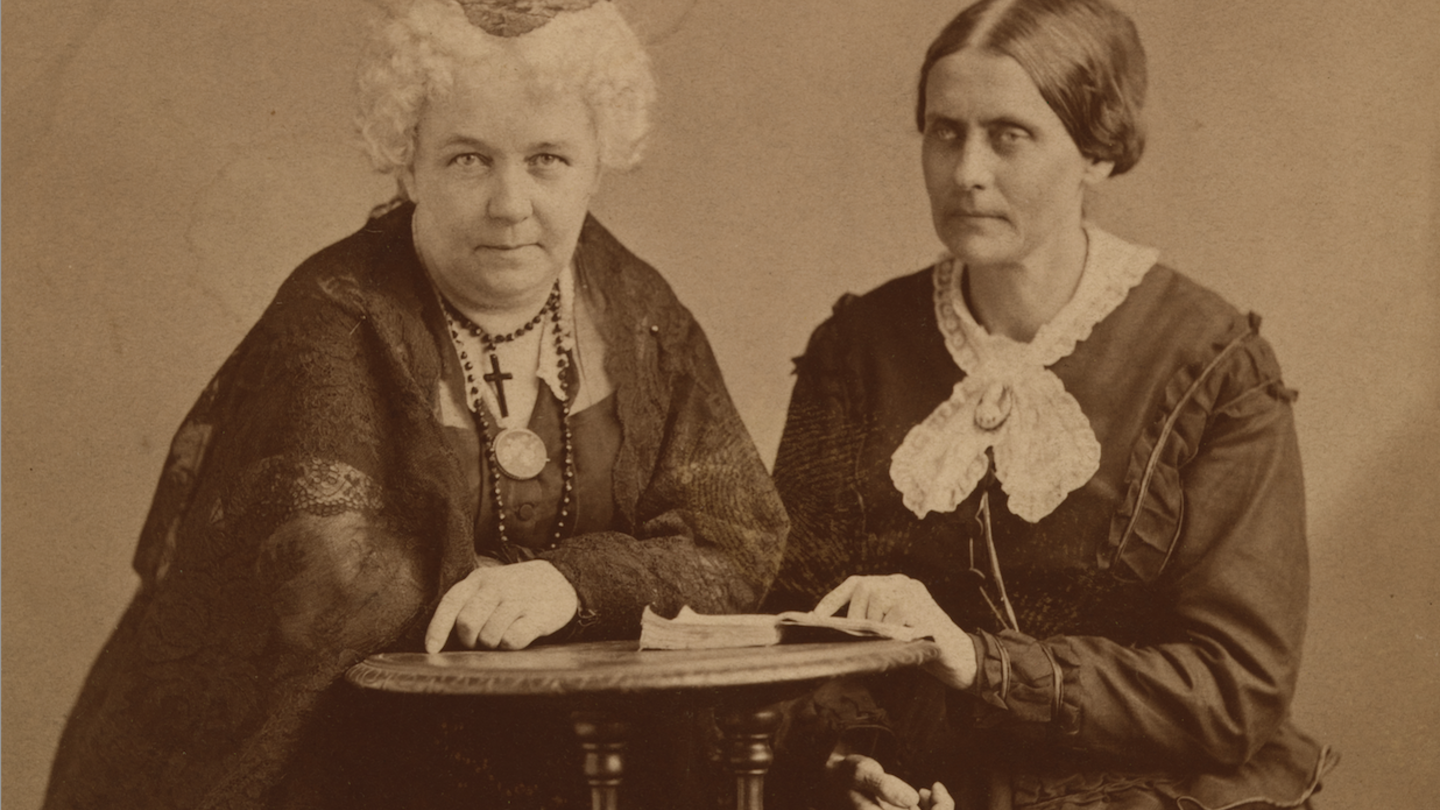This article was originally published by Stand Together Trust.
Elizabeth Cady Stanton (1815-1902) was one of the leading figures of the early women’s rights movement and is best known for her efforts in writing the Declaration of Sentiments for the Seneca Falls Convention and for organizing the women’s suffrage movement in the United States. Throughout her life, Cady Stanton passionately sought to elevate the status of women through equal rights.
Cady Stanton’s passion for women’s rights started during her childhood, when she would often read her father’s law books and engage his law clerks in lively discourse. In addition to the informal legal education her father provided her, Cady Stanton received a formal education at the co-educational Johnstown Academy in her hometown of Johnston, New York, until she was 16. She then attended the Troy Female Seminary, later renamed the Emma Willard School after its founder.
Originally, Cady Stanton had desired to attend Union College, which was where her male classmates from Johnstown Academy attended after graduation, but she was barred from entry due to her sex.
Reflecting on her childhood and her early experiences with discrimination, Cady Stanton expressed remorse at being unable to compete on level academic footing: “When those with whom I had studied and contended for prizes for five years came to bid me good-by, and I learned of the barrier that prevented me from following in their footsteps–‘no girls admitted here’–my vexation and mortification knew no bounds. … Again I felt more keenly than ever the humiliation of the distinctions made on the ground of sex.”
Prior to narrowing her focus to the women’s rights movement, Cady Stanton was involved in the temperance and abolition movements, through which she met her husband, Henry Brewster Stanton. The two married in 1840, though she requested that “obey” be left out of their marriage ceremony, as she “obstinately refused to obey one with whom I supposed I was entering into an equal relation.”
During their honeymoon in London, Cady Stanton and her husband attended the World’s Antislavery Convention, where she met Lucretia Mott, another prominent women’s rights activist. After the male delegates to the conference voted that women should be denied participation and they were moved to a roped-off section hidden from view, Cady Stanton committed herself to women’s rights and, with Mott, became determined to hold a women’s rights convention.
The convention they organized was the now-iconic Women’s Right’s Convention at Seneca Falls, New York, in 1848. It was there that Cady Stanton read her Declaration of Sentiments, a rewriting of the Declaration of Independence that called for voting rights for women and proclaimed all men and women to be equal.
Following the convention at Seneca Falls, Cady Stanton met Susan B. Anthony, and the two formed a lifelong friendship based on their shared passion for women’s rights. Cady Stanton was mother to seven children, and her maternal duties often prevented her from actively participating in the movement alongside Anthony. While she was unable to travel to give lectures, she was a prolific writer and composed many of Anthony’s speeches.
Cady Stanton’s fight for women’s rights also extended beyond the right to vote. She advocated for liberalized divorce laws, reproductive self-determination, and increased legal rights for women. These stances alienated her from others in the movement but only experienced limited degrees of success during her lifetime. Cady Stanton’s 1854 “Address to the Legislature of New York” helped influence the decision to pass the Married Women’s Property Law of 1860, “giving married women the right to own property, engage in business … and be joint guardian of their children.”
In Stand Together Trust’s offices, we have named our classrooms and conference rooms after men and women who devoted their lives to defending and promoting the ideas of a free and open society. Their names remind us that our work requires a diversity of voices from the past, present, and future. Elizabeth Cady Stanton’s is one of those voices that we honor, and one of her quotes in particular bears weight on our work: “To make laws that man cannot and will not obey, serves to bring all law into contempt.”
This physical reminder connects us to Cady Stanton’s legacy of striving to improve well-being. She died 18 years before women were granted the right to vote in the United States, but her revolutionary ideas and unwavering focus on improving the status of women serves as compelling inspiration still today.
***
Learn more about Stand Together’s work to defend America's constitutionally limited government, and explore ways you can partner with us.




